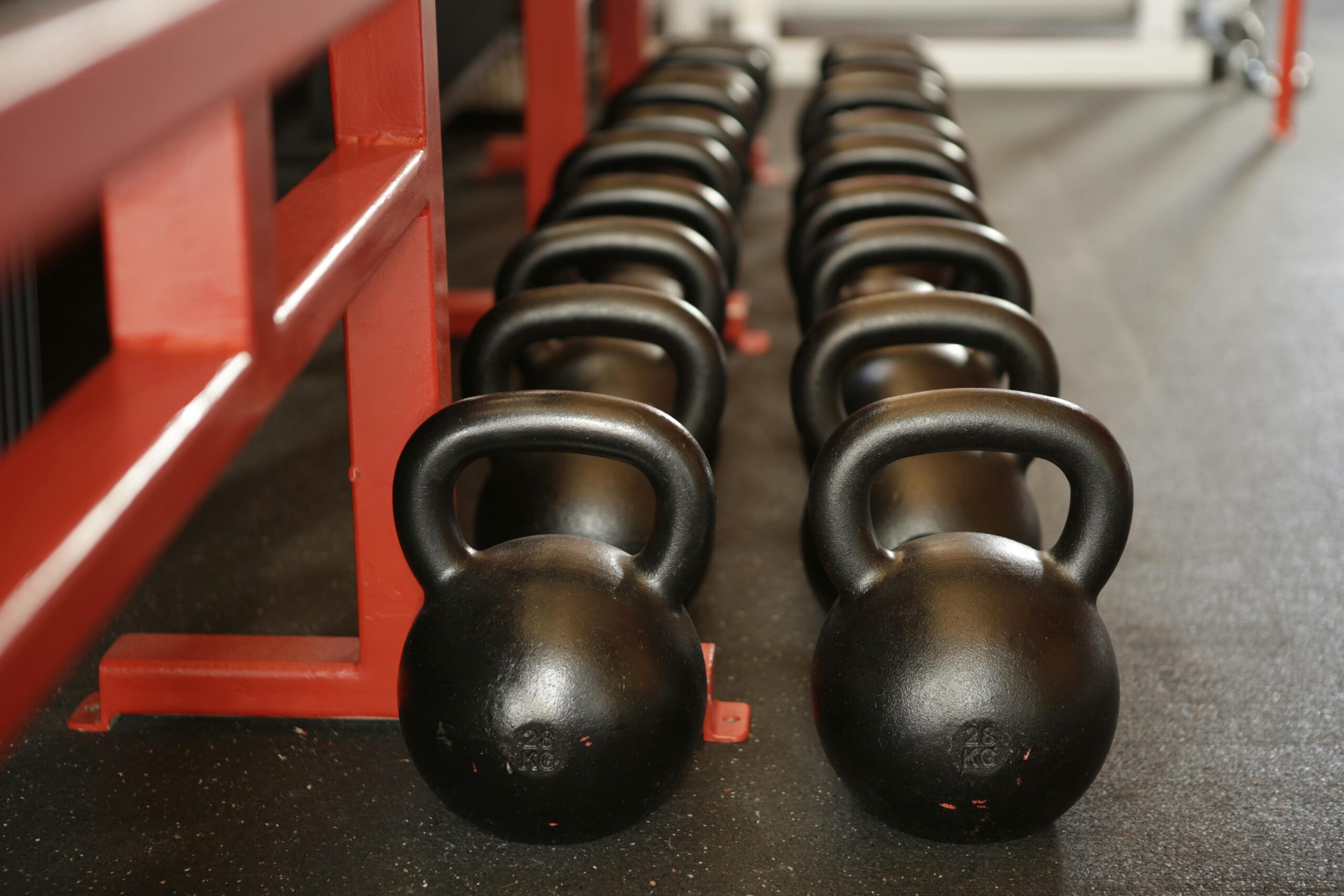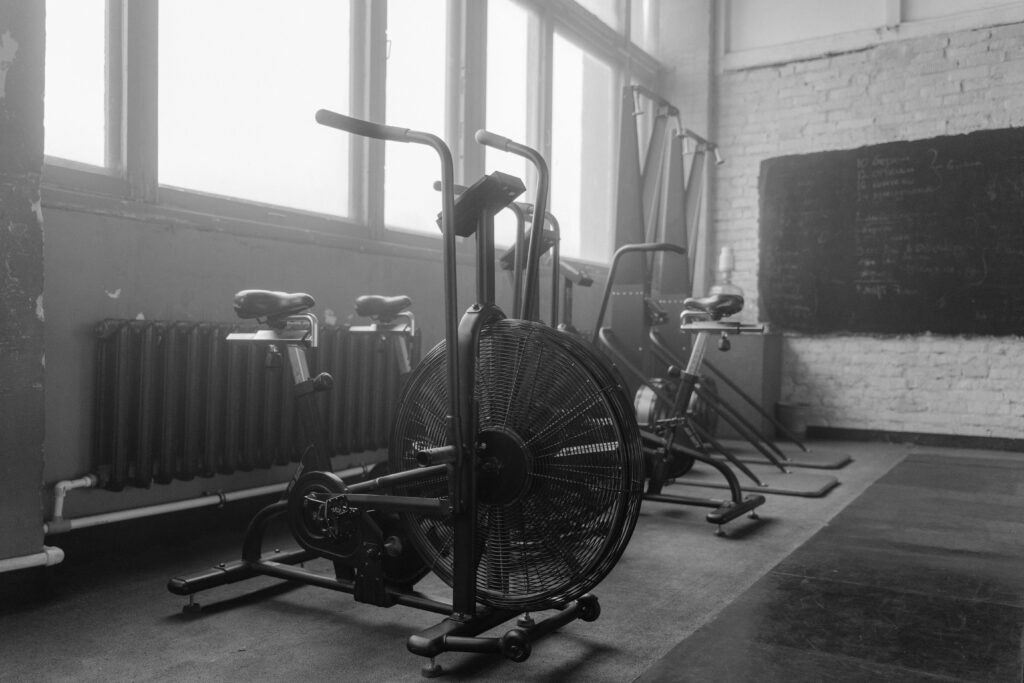Is your program doomed from the start?
That’s assuming you’re even following a program and not just winging it every time you walk into the gym. (If that stings a little, it probably applies.)
The truth is, plenty of programs look good on paper but fall apart in practice. They look exciting and they feel challenging, but they don’t actually move you closer to your goals. A great training program has structure, purpose, and staying power.
Think of it like building a house: you don’t start with the curtains and paint color; you start with the foundation and the blueprint. Miss those, and the whole thing collapses. Training is no different.
In this week’s article, I’m breaking down five non-negotiable keys to a great program, and just as importantly, what happens if those keys are missing. This is the lens I use when programming for myself, my athletes, and the everyday clients I work with.
Key #1: Balance Strength & Conditioning
Let’s start with some physiology here. Strength training drives adaptations like greater force production, increases in muscle cross-sectional area, stronger connective tissue, and improved bone density. These changes make you more resilient to stress, whether that’s lifting a barbell, carrying groceries, or just protecting your joints as you age.
Conditioning, especially aerobic work, hits a different system. It improves mitochondrial density (your cells’ ability to produce energy efficiently), expands cardiac output (your heart’s ability to pump blood), and enhances capillary networks (delivering oxygen and nutrients where they’re needed). These adaptations not only boost endurance performance but also speed recovery between sets, sessions, and even stressful life events outside the gym.
These systems support each other. Better aerobic fitness means you can recover faster between heavy sets or hard intervals. More strength and muscle mass means you’re more efficient at producing power during sprints, climbs, or circuits. The physiology isn’t just “clear”, it’s intertwined.
Now, specialists can and should focus. A powerlifter doesn’t need marathon mileage, and a marathoner doesn’t need a triple-bodyweight deadlift. But for the everyday athlete, the person who wants to be fit, strong, capable, and healthy, the sweet spot is somewhere in the middle. Strength without conditioning leaves you winded. Conditioning without strength leaves you fragile.
A great program trains both. That doesn’t mean equal doses on every training day, but it does mean acknowledging both sides. Zone 2 aerobic work, high-intensity intervals, max effort lifts, hypertrophy training—they all play a role. Miss this key, and you’re leaving performance, recovery, and long-term health on the table.
Key #2: The Right Training Split
“The right split is the one that lines up with your physiology and your calendar. Nail that, and you’ll find yourself training consistently, recovering better, and making steady progress.”
Your split is simply what you do on what day. There isn’t a single “best” split, it comes down to what matches your goals, your schedule, and how well you recover.
If you’re a busy dad with three days to train, a full-body split is more than sufficient. If you have four days to train, an upper/lower setup works great. If you can carve out time most days of the week, you can structure it so you’re hitting some form of training daily. The key is making the split sustainable. A plan that looks great on paper but doesn’t fit your life won’t last.
From a physiological standpoint, there are a few principles worth considering:
- Recovery windows. Muscles and connective tissue need roughly 24–72 hours to recover, depending on training volume and intensity. That’s why hitting chest every single day isn’t productive. The split should allow recovery for targeted muscle groups while still giving you the chance to train other qualities.
- The interference effect. High-intensity endurance work and heavy lifting compete for similar cellular resources. Research shows that stacking them in the same session can blunt adaptations. I’ve written on this topic in detail elsewhere, but it’s worth restating here, that it often works best to separate your strength and conditioning into different sessions or at least train them on opposite ends of the day when possible.
- Psychological benefit. Knowing exactly what today’s training focus is, whether it’s squats, intervals, or recovery—reduces decision fatigue. It keeps you consistent, which is half the battle.
The “wrong” split isn’t necessarily one that looks different from someone else’s, it’s the one that mismatches your recovery capacity and lifestyle. Get that mismatch wrong, and you either overreach (too much frequency, not enough recovery) or stagnate (too little stimulus, too many days off).
The right split is the one that lines up with your physiology and your calendar. Nail that, and you’ll find yourself training consistently, recovering better, and making steady progress.
Key #3: A Clear System & Methods
Random workouts can be fun in the short-term, but they rarely create long-term progress. The body doesn’t adapt to chaos; it adapts to structured stress. Physiologists call this the SAID principle (Specific Adaptation to Imposed Demands). Briefly: you get good at what you repeatedly train.
That’s why great programs are built on systems. A system is the framework that directs progression, such as conjugate, concurrent, block periodization, even linear (though linear rarely fits the realities of everyday athletes). These systems provide structure so that every week builds toward something bigger.
Within those systems, you plug in methods. For strength, that could be:
- Max Effort Method – heavy lifts for strength and neural adaptation.
- Repetition Method – higher rep work to build muscle, joint integrity, and unilateral balance.
- Dynamic Effort Method – moving submaximal weights with speed to improve rate of force development.
But strength is only half the story. Conditioning requires its own set of methods, with each targeting a different energy system. Some examples I program often:
- Cardiac Output Method – steady Zone 2 work to build aerobic capacity and recovery ability.
- Cardiac Power Intervals – near-maximal bouts to push stroke volume and aerobic power.
- Explosive Repeat Method – short, high-power efforts with incomplete rest to train alactic power.
- High-Resistance Intervals – think sled pushes or uphill sprints to build alactic capacity and strength-endurance crossover.
- Repeat Sprint / Lactic Power Intervals – short, brutal bursts to improve anaerobic endurance when needed.
These aren’t just fancy names. They’re ways of applying stress to specific systems so your body adapts in predictable ways. Aerobic, anaerobic, and alactic work all have distinct physiological targets, and the methods you use decide which one you’re training.
Without a system, you’re just guessing. With one, you’re deliberately driving adaptation. That’s the difference between exercise (random effort) and training (planned progression). This is why even the best athletes, at the highest levels, stick to systems. They aren’t guessing. They’re training.
Key #4: Details That Drive Results
Sets, reps, rest, tempo, exercise choice. This is where the science meets the art of programming. On paper, two programs might look similar. In reality, the details make them completely different animals.
Too many programs default to “3×10” across the board for every exercise. But adaptation is driven by manipulating variables. A set of 4×6 squats at 80% with three minutes of rest is a maximal strength stimulus. A set of 3×12 with 45 seconds rest is a hypertrophy and muscular endurance stimulus. Same movement, entirely different outcomes.
Then there’s training volume and intensity, sometimes measured as tonnage (sets × reps × weight). It’s not just about how many sets you do, but the total workload you accumulate. Programs that don’t account for this often underdeliver or lead to overtraining.
Coaches also lean on frameworks like Prilepin’s Chart, which outlines optimal rep ranges and intensities for strength work, or INOL (Intensity Number of Lifts), which gives a simple way to gauge whether your training dose is too light, too heavy, or just right. You don’t need to memorize these tools, but you should know they exist, because they guide smart programming and ensure your effort leads to results, not plateaus.
Even subtler details matter. Tempo changes recruitment and tension. Controlling the eccentric (lowering portion of a movement) for four seconds builds tissue resilience, while explosive concentrics (the raising portion of a movement) train power. Rest intervals shift the adaptation: longer rests restore strength, shorter rests push conditioning.
The details don’t have to be complicated, but they do need to be included and intentional. If every session is thrown together without adjusting these levers, you end up with “junk volume”, work that feels hard but doesn’t drive a clear adaptation. When the details align with the bigger picture, training becomes purposeful instead of just tiring.
Key #5: Built-In Feedback & Adaptation
A training program is a living document. Physiologists talk about concepts like homeostasis disruption and supercompensation, but the bottom line is simple: your body adapts to stress, and once it adapts, you need a new challenge.
That’s why the best programs build in feedback loops. You train, you measure, you adjust. This can take many forms:
- Training logs. Writing down weights, reps, and conditioning metrics (pace, distance, heart rate) lets you see trends over time. My programs available in TrainHeroic have this built in.
- Performance benchmarks. Things like rep maxes, run times, wattage tests, or even how fast you recover between intervals give you data beyond “did this feel hard?”
- Block reviews. Looking back every 4–6 weeks helps determine if the training block moved you closer to your goals or if adjustments need to be made.
The key isn’t just testing but testing the right things. If your goal is strength, you should see steady progress in rep PRs or training maxes. If your goal is conditioning, you should be tracking VO₂ max estimates, resting heart rate, or repeatability in intervals. Recovery markers, like heart rate variability (HRV), how well you’re sleeping, how sore you stay, or even your readiness scores from a wearable are also data points.
Great coaches don’t wait until someone is injured, overtrained, or burned out to make changes. They look at the data week-to-week, listen to athlete feedback, and adjust the program accordingly. That might mean reducing volume, changing exercise selection, or shifting conditioning methods.
Without feedback, you’re flying blind. You might think you’re working hard, but without measurement you can’t tell if you’re actually progressing or just repeating the same effort over and over. With feedback built in, training becomes a cycle of stress, adaptation, and recalibration. That’s how you create progress year after year.
A great training program is built on the basics and fundamentals over flash. Strength and conditioning both being developed in balance. A split that aligns with both physiology and lifestyle. A clear system with proven methods. Attention to details that shape adaptation. Feedback loops that keep you progressing.
When even one of these keys is missing, cracks eventually appear: stalled progress, nagging injuries, or the sense that you’re working hard but spinning your wheels. Put the pieces together, and training becomes a process that builds long term strength, fitness, and longevity.
The challenge is simple: take an honest look at your own training. Do these five keys show up in your program? If so, stay the course. If not, this is your opportunity to refine the blueprint using the keys outlined here. Because the best program isn’t the one that feels exciting today, it’s the one that continues to make you stronger, fitter, and healthier a year, five years, even a decade from now.





